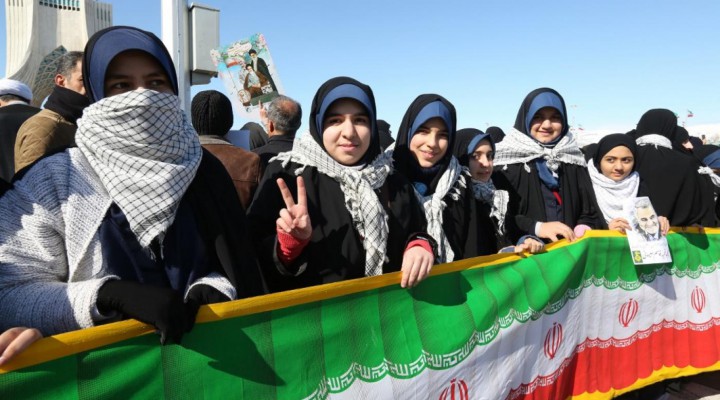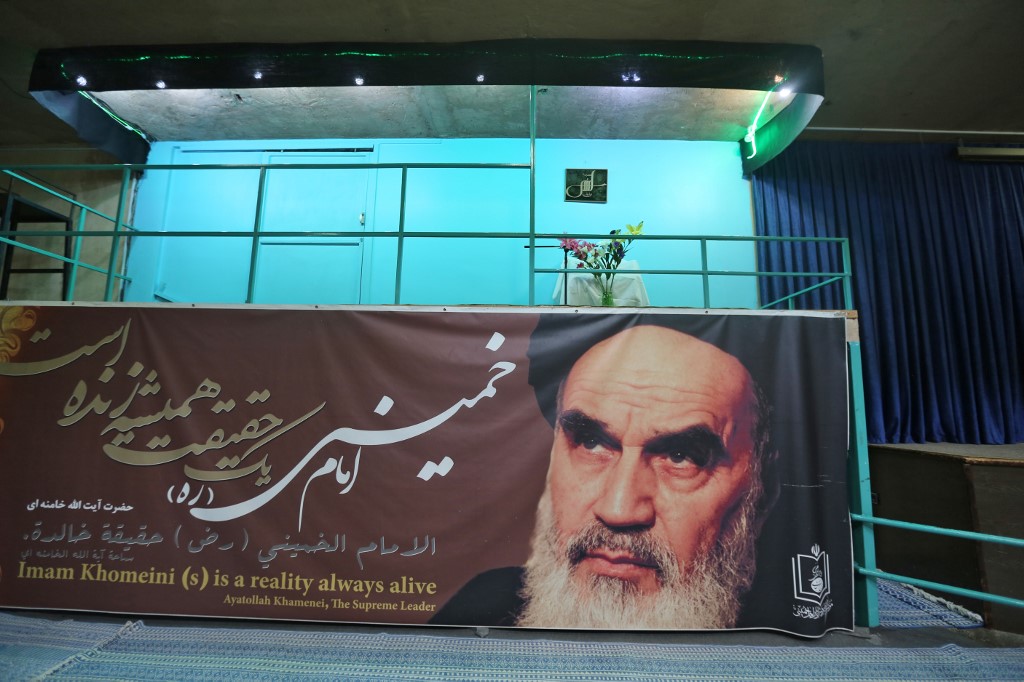Four decades on, the West still doesn’t get the Iranian revolution

Tehran’s systematic opposition to Western hegemony continues to reverberate throughout the region
The Iranian revolution occurred 41 years ago, but its consequences endure, having triggered a set of geopolitical earthquakes that transformed the Middle East.
The regime change in Tehran in 1979 deprived the US of one of its leading strategic assets in the region. Energy markets were affected by a second oil shock after the 1973 one; a Shia revival reactivated the centuries-old Sunni-Shia confrontation within Islam; and some Middle Eastern boundaries were redrawn with blood. Another centuries-old confrontation, between Islam and the West, found new life.
Hopes and delusions
The revolution ultimately generated a sequence of events in the region similar to the 17th-century Thirty Years’ War in Europe, with the notable difference that the Middle Eastern version – more recently carried out by the US-led Arab Nato and the Iranian-led Axis of Resistance – has now reached its 40th year, and shows no signs of ending. A new security architecture in the region is highly needed, but it seems there is no will or leadership to promote it.
The last decade has provided hopes and delusions, from the 2015 Iran nuclear deal to the fears of a new regional conflict generated by the US withdrawal from that same agreement. Conflicts and tensions between two new geopolitical entities are affecting Lebanon, Syria, Iraq, Yemen and the occupied Palestinian territories.
To understand the revolution’s impact, to an extent, it can be linked to the tragic events of 9/11 – although not in the sense promoted relentlessly by the diehard neocons who have tried for decades to hold Iran accountable for the 2001 terrorist attacks.
Rather, the thread linking these events is the reaction by the most fundamentalist branch of Sunni Islam, Wahhabism, to the revolution: a panic-driven response by Saudi Arabia caused it to launch a massive campaign of global financing and promotion of its Wahabi strand which unintentionally culminated in terrorist attacks by groups including al-Qaeda and, later, the Islamic State.
But the meaning of the Iranian revolution goes beyond geopolitics. It is something much deeper and more difficult to grasp. One of the lesser-known, but most significant acts carried out by the revolution’s leader Ayatollah Ruhollah Khomeini a few months before his death may be helpful in understanding this.
Essential messages
On 1 January 1989, the former supreme leader directed a letter to then-Soviet leader Mikhail Gorbachev, as the country and its communist ideology experienced its terminal phase.
The letter, complex and imbued with metaphysical and philosophical references, contained a couple of essential messages: that communism’s crisis was due to the choice to “obliterat[e] God and religion from society”, and that Gorbachev had deluded himself into thinking that the solution to his country’s problems was represented by the “illusory heaven” of the Western world.
Revolutionary Iran thus stood as the champion in opposing the two great historical materialisms: communism and capitalism. In essence, Khomeini’s Iran waged a systemic cultural war against the Western Enlightenment – specifically, its removal of religion from the lives of individuals. Western secular civilisation and modernity were contested at their roots.

Leaving aside philosophy and metaphysics, the Iranian Revolution was the culmination of a systematic opposition, going back to the 19th century, against a perceived oppressive Western hegemony – not only political and military, but above all, economic and cultural.
Forty years later, Khomeini’s letter still offers cues for reflection, especially in light of current global dynamics. Russia, after a brief interlude spent in what Khomeini called the “Western garden”, with disastrous economic and social outcomes, has in the last two decades taken another path based on different identity values, drawn from the Christian-Orthodox religious tradition.
Ravaged by identity conflicts
In the last decade, Europe and the US have been ravaged by culture wars and identity conflicts, where religious and ethical values have played a non-secondary role. These conflicts have jeopardised the European political project and its set of secular values and principles. In the US, they are leading to a polarisation not seen since the 19th century civil war, making the leader of the free world barely recognisable, even by its more faithful allies and friends.
In the meantime, communism’s last political bastion, China, seems to have succeeded in combining the “best” of these two ideologies, and it aspires to a world-leading role in 2049, the 100th anniversary of its own Revolution.
Ultimately, the persistence with which the US opposes Iran, and by which Israel portrays it as an existential threat, are due precisely to Iran’s ideological stance.
Tehran’s alleged nuclear military programme is largely a pretext. Iran is not considered a “normal nation” because it has refused to bow to the Western world order and the Pax Americana in the Middle East, and is the last country in the region opposing the liquidation of the Palestinian problem.
Iran’s capital sin has been its missionary struggle, according to its own peculiar and disputable views, against perceived oppression and injustice attributed to Western nations and their Arab “proxies”. Iran still claims, perhaps naively, to oppose Western neoliberal materialism and its related world order, considered sources of moral corruption and depravity (the “Great Satan”).
Revolutionary fatigue
Forty years on, however, the revolution’s religious fervour has greatly subsided; the population, especially the youth, show strong signs of “revolutionary fatigue”. However, such a feeling should not be naively morphed into a propensity for regime change.
The essentially binary Western mind should make an effort to reconcile with the fact that the people in the streets of Tehran, Baghdad and Beirut may protest against their governments’ heavy-handed policies, economic mismanagement and corruption, but this does not equate to their automatic embrace of an increasingly decrepit Western model.
Watching the massive scale of Iranian General Qassem Soleimani’s funeral, after his assassination on Donald Trump’s orders, it is clear that many Iranians, no matter their dissatisfaction with life in the Islamic republic, have no illusions that the US will be their saviour.
https://www.middleeasteye.net/opinion/how-has-iranian-revolution-reshaped-middle-east
 TheAltWorld
TheAltWorld 
0 thoughts on “Four decades on, the West still doesn’t get the Iranian revolution”